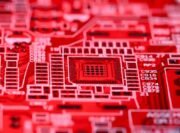As someone with extensive experience in the field of embedded systems, I understand how crucial it is to stay updated on the latest developments and trends. The advantage of embedded system technology is undeniable, and its applications are continuously expanding across various industries. Integrating these systems can lead to increased efficiency and cost-effectiveness, making them an essential aspect of modern technology.
Why are embedded systems so important, and what advantages do they offer? The primary advantage of embedded systems is their ability to perform specific tasks with high efficiency and reliability while using minimal resources. These systems can be tailored to meet the unique requirements of different industries, resulting in a wide range of applications that benefit from their precise control and reduced complexity. By following this article, you will gain valuable insights into the potential of embedded systems and learn how to harness their full potential. So, let’s dive in and explore the world of embedded systems together!
What is an Embedded System?
An embedded system is a specialized computer system designed to perform specific tasks within a larger system, often with dedicated functions and real-time constraints. These systems feature a combination of hardware and software components that work together seamlessly to achieve desired outcomes. The main advantage of embedded systems lies in their ability to operate efficiently and reliably while using minimal resources, making them an integral part of modern technology.
Embedded systems are typically characterized by their small size, low power consumption, and high level of integration. They are designed to handle specific tasks with precision and speed, which allows them to be tailored to the unique requirements of different applications. This customization leads to a wide range of industries benefiting from the precise control and reduced complexity provided by embedded systems.
Recent studies estimate that the global embedded systems market will reach $116.2 billion by 2025, growing at a CAGR of 6.1% from 2020 to 2025. This growth is fueled by the increasing adoption of embedded systems across various sectors, including automotive, consumer electronics, healthcare, and industrial automation. The rapidly evolving nature of embedded systems technology ensures that they remain at the forefront of innovation, offering new possibilities for improving efficiency and performance in countless applications.
5 Key Components of Embedded Systems
Embedded systems have become an essential part of modern technology, and understanding their key components can help you make informed decisions when choosing or developing such systems for your projects. So, what are the primary components that make up an embedded system? Let’s explore five crucial elements:

Advantage of Embedded System: Unlocking Their Potential
- Microcontroller or Microprocessor: This is the core of any embedded system, responsible for executing instructions, processing data, and managing system resources. Microcontrollers are typically used for simpler applications, while microprocessors offer more computing power and flexibility for complex tasks.
- Memory: Embedded systems require memory to store data and instructions for the microcontroller or microprocessor. There are two main types of memory: volatile (RAM) and non-volatile (ROM, EEPROM, or Flash). The choice of memory type depends on the specific requirements of the application.
- Input/Output (I/O) Devices: I/O devices allow the embedded system to interact with its environment. These devices can include sensors, actuators, buttons, switches, and display units. The selection of I/O devices depends on the system’s purpose and the desired level of user interaction.
- Power Supply: Embedded systems often need to operate under strict power constraints, making it essential to choose a suitable power supply. Power sources can range from batteries to power adapters or even energy harvesting techniques for low-power applications.
- Software: The software component of an embedded system includes the operating system, drivers, and application-specific code. This software is responsible for controlling the hardware components and implementing the system’s functionality.
By understanding these key components, you can develop a clear picture of how embedded systems function and tailor them to meet the unique requirements of various applications.
4 Major Advantages of Using Embedded Systems
So, what are the primary advantages of using embedded systems in various applications? Let’s explore four significant benefits that make embedded systems an attractive choice for a wide range of industries:
- Efficiency: Embedded systems are designed to perform specific tasks, allowing them to operate with high efficiency and precision. This results in faster processing times and reduced energy consumption, which is particularly crucial for battery-powered devices or energy-sensitive applications.
- Reliability: Due to their dedicated functionality and robust design, embedded systems tend to be highly reliable and resistant to failures. They often have fewer moving parts and a straightforward architecture, which decreases the chances of system errors or crashes.
- Cost-effectiveness: Embedded systems can be more cost-effective compared to general-purpose computers, as they require fewer resources and components. Their tailored design means that they only include the necessary hardware and software elements, reducing both production costs and maintenance expenses.
- Small form factor: One of the defining features of embedded systems is their compact size, which allows them to be easily integrated into a variety of devices and equipment without taking up much space. This small form factor enables the development of innovative products and solutions that were previously unattainable due to size constraints.
By leveraging these advantages, embedded systems offer a highly efficient, reliable, and cost-effective solution for a wide range of applications across different industries. As technology continues to advance, the potential of embedded systems will only continue to grow, making them an essential aspect of modern technology.
How to Design an Effective Embedded System
Designing an effective embedded system requires careful planning, selection of suitable components, and thorough testing. By following a structured approach, you can create a robust and efficient system that meets the specific requirements of your application. In this section, we will discuss some essential steps to help you design an effective embedded system.
- Define the system requirements: Start by identifying the primary purpose of your embedded system and the tasks it needs to perform. This will help you determine the required processing power, memory, input/output devices, and other necessary components.
- Choose the right microcontroller or microprocessor: Based on your system’s requirements, select a suitable microcontroller or microprocessor that offers the necessary processing capabilities, memory, and peripherals to support your application.
- Select appropriate memory and storage: Choose the right types of memory (volatile and non-volatile) and storage devices that meet your system’s data storage and retrieval requirements.
- Design the hardware architecture: Create a schematic diagram of the system’s hardware components, including the microcontroller, memory, I/O devices, power supply, and communication interfaces. Ensure that all components are compatible and interconnected correctly.
- Develop the software: Write the software code for your embedded system, including the operating system, drivers, and application-specific code. Use programming languages and tools suitable for embedded systems development, such as C, C++, or assembly language.
- Test and debug the system: Thoroughly test your embedded system to identify any performance issues, bugs, or hardware compatibility problems. Debug the system to resolve these issues, and iteratively refine the design until it meets your desired performance and functionality goals.
By following these steps, you can design an effective embedded system that delivers the desired performance, reliability, and efficiency for your specific application.
Emerging Technologies and the Future of Embedded Systems
As technology continues to advance rapidly, embedded systems are evolving to keep up with the latest trends and innovations. With the growing importance of IoT, AI, and edge computing, what emerging technologies will shape the future of embedded systems? Let’s explore some exciting developments that are likely to have a significant impact on the industry:
- Internet of Things (IoT): IoT devices often rely on embedded systems to process data and communicate with other devices or networks. As IoT adoption increases, embedded systems will play a crucial role in enabling seamless connectivity and real-time data processing.
- Artificial Intelligence (AI) and Machine Learning (ML): Integrating AI and ML capabilities into embedded systems can provide advanced analytics, predictive maintenance, and autonomous decision-making. This can lead to improved efficiency, reduced downtime, and enhanced performance in various applications.
- Edge Computing: Edge computing brings data processing closer to the source of data generation, reducing latency and improving response times. Embedded systems can be designed to perform edge computing tasks, enabling real-time processing and decision-making in various applications, such as autonomous vehicles and smart cities.
- 5G Connectivity: The advent of 5G networks will enable faster data transfer rates and lower latency, enhancing the capabilities of connected embedded systems. This increased connectivity can lead to new applications and use cases for embedded systems across various industries.
- Flexible Electronics: The development of flexible electronics allows for embedded systems to be integrated into unconventional form factors, such as wearable devices and flexible displays. This can lead to innovative products and solutions that were previously unattainable due to size and shape constraints.
These emerging technologies present exciting opportunities for the future of embedded systems, opening up new possibilities for improving efficiency, performance, and functionality in countless applications across different industries. As we continue to push the boundaries of what’s possible, there’s no doubt that embedded systems will remain at the forefront of technological innovation.
Overcoming Challenges in Embedded System Development
Developing embedded systems can be a complex process, with numerous challenges to overcome. These challenges can include selecting the appropriate hardware and software components, meeting stringent power constraints, ensuring system reliability, and adhering to tight development timelines. By understanding the potential obstacles and adopting best practices, developers can successfully navigate these challenges and create effective embedded systems.
One of the critical aspects of embedded system development is choosing the right microcontroller or microprocessor, which must meet the specific requirements of the application while balancing factors such as cost, power consumption, and performance. Additionally, developers must carefully select appropriate memory types and storage options to ensure efficient data storage and retrieval. Designing the hardware architecture and creating a schematic diagram that accurately represents the system’s components and interconnections is another crucial step in the development process.
In terms of software development, selecting suitable programming languages and tools for embedded systems is vital. Implementing proper coding practices, such as modular programming and thorough documentation, can help streamline the development process and make it easier to identify and fix bugs during testing and debugging phases.
Finally, it is essential to thoroughly test and validate the embedded system to ensure it meets the desired performance and reliability standards. This may involve rigorous testing under various conditions, including temperature extremes, high vibration, and electromagnetic interference. By anticipating and addressing these challenges, developers can create robust and efficient embedded systems that meet the specific needs of their applications.
Conclusion
Embedded systems play a vital role in modern technology, providing efficient and reliable solutions for a wide range of applications across various industries. As we continue to push the boundaries of innovation, emerging technologies such as IoT, AI, and edge computing will undoubtedly shape the future of embedded systems, offering new possibilities for improving efficiency, performance, and functionality.
To Wrap up, understanding the key components, advantages, and challenges involved in designing and developing embedded systems can empower individuals and organizations to create tailored solutions that meet their unique requirements. By staying informed about the latest trends and advancements in the field, we can harness the potential of embedded systems to drive continued technological progress and enhance our daily lives.
Frequently Asked Questions
[faq-schema id=”810″]
















